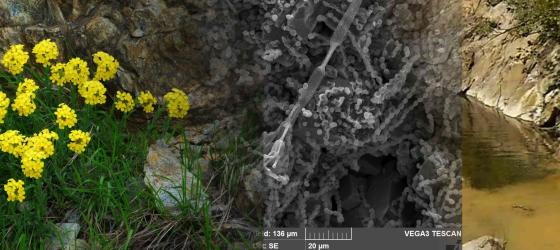The presence and spatial distribution of potentially ecotoxic elements and compounds in geological matrices and in various anthropic compartments is of major interest for the protection of the environment and human health.
It is needed for the evaluation of interventions foreseen by regional and national environmental regulations in the field of prevention and protection and to devise territorial planning tools.
The variety of the subject matter requires a high a interdisciplinar feature, which, thanks to the collaborations in place within DISTAV, has made it possible to develop numerous scientific research projects of international relevance and specific agreements with public Agencies and companies, including:
- Geochemical mapping of Liguria based on solid matrices (active river sediments) and water, with a particular interest detection of interactions between landfill water and groundwater and to recognise abnormal natural concentration (M. Vetuschi Zuccolini);
- Determination of background values in natural geological matrices (water, soil sediments) in support of environmental regulations (P. Marescotti, M. Vetuschi Zuccolini);
- Reactivity of minerals responsible for the release/sequestering of ecotoxic elements (P. Marescotti, M. Vetuschi Zuccolini);
- Interactions between mineral phases and biological components (fungi, plants) in natural and anthropogenic soils (P. Marescotti, M. Zotti);
- Applications for the remediation of contaminated soils and waters by chemical-physical methods, bioremediation and environmental biomediation (myco- and phyto-remediation) (M. Capello, S. Di Piazza, P. Marescotti, M. Mariotti, E. Roccotiello, M. Zotti);
- Identification and quantification of fibrous and harmful minerals in excavated soil and rocks and in the working environment in the context of environmental monitoring associated with large-scale works (L. Gaggero, P. Marescotti);
- Natural radioactivity of rocks and soils, radongenic potential in relation to the geological substrate and level of radioactivity in housing structures (M. Verdoya).

